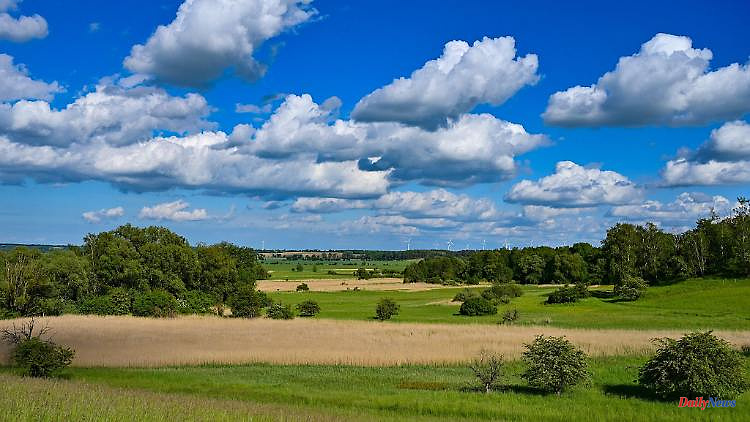Almost 270 years ago the draining of the Oberbruch in present-day Brandenburg began. King Friedrich II attracts people from many parts of Europe - a small EU. Today it is Europe's largest populated polder landscape. Dozens of places have now ensured that the region receives the cultural heritage seal.
The cultural landscape of Oderbruch now officially bears the European Cultural Heritage Seal. The associated project "The Oderbruch - People Make Landscape" will receive the EU seal at a ceremony in Brussels in the evening, as the actors and the Brandenburg Ministry of Culture announced. In addition to the award winners, the eight-strong delegation also includes Minister of Culture Manja Schüle and District Administrator of Märkisch-Oderland Gernot Schmidt.
The award was given to Europe's largest populated polder landscape because, according to the EU Commission, the ideals and history of the EU are symbolized here in a special way. This is the first time in the history of the seal that an entire landscape has received this recognition. Local actors had been trying to do this for a long time. Around 36 Oderbruch locations had joined the project, which was prepared over two years. With the award, the Oderbruch should gain public and political attention.
For Minister of Culture Schüle, the Oderbruch is an impressive example of successful integration. "People from all over Europe have made it arable, designed and enriched it over the past centuries with their knowledge and commitment," she explained.
The region arose after the drainage almost 270 years ago, was settled by Prussian King Frederick II with colonists and is maintained as a habitat by a sophisticated water system. Only two projects - in addition to the Oderbruch, the Fulda monastery and Petersberg in Hesse - had the German Conference of Ministers of Education forwarded 2020 to the EU Commission for application. The pandemic had made the further procedure more difficult.
"The most important thing is community involvement, it's worth twice as much because local people are involved," said Kenneth Anders, program manager at the Oderbruch Museum Altranft - Workshop for Rural Culture. If you develop a clever description of your own landscape together, culture becomes regional development. According to District Administrator Schmidt, the award sets an example for the people who have their home in the Oderbruch and who fill the region with life and meaning.
The Oderbruch in eastern Brandenburg is a former marshland. The area stretches between Frankfurt an der Oder and Hohensaaten. Well-known places include Küstrin, Seelow, Neuhardenberg, Wriezen and Bad Freienwalde. The former inland delta of the Oder is characterized by wide meadows, wetlands and arms of the river. The dominant economic sectors are tourism and agriculture.












